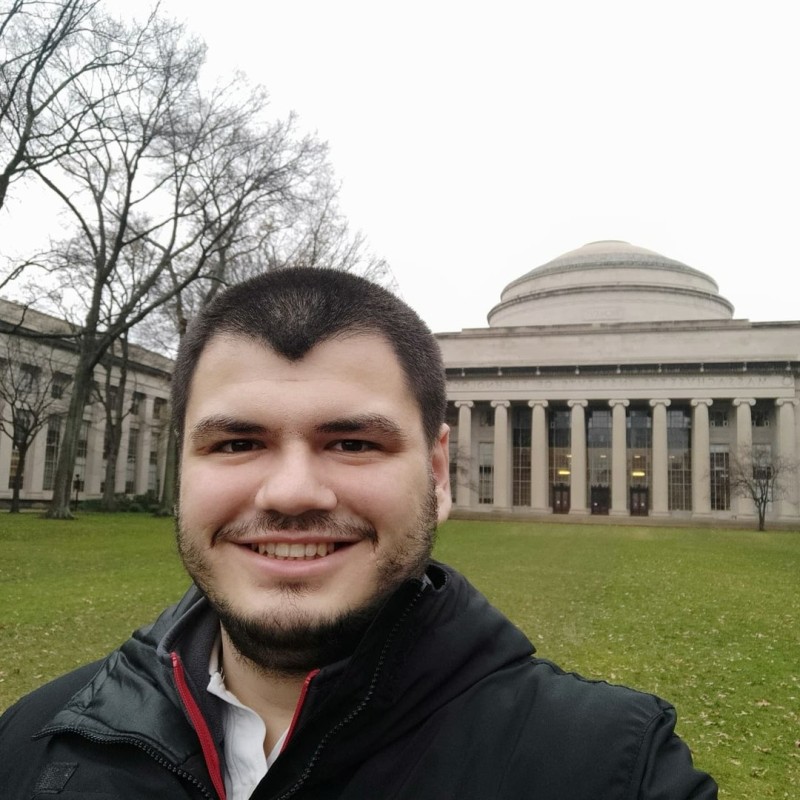Tissue Engineering
(K-420) Origami-Inspired Inflatable Paper Scaffold for Bone Tissue Engineering

Solbin Lee
Student Researcher
Rose-Hulman Institute of Technology, University of Massachusetts Lowell
Terre Haute, Indiana, United States
Mert Gezek
PhD Student
University of Massachusetts Lowell, United States- GC
Gulden Camci-Unal (she/her/hers)
Principle Investigator, Associate Professor
University of Massachusetts Lowell
Lowell, Massachusetts, United States
Presenting Author(s)
Last Author(s)
Primary Investigator(s)
Bone supports and protects crucial parts of the human body, but it can be damaged due to aging or external traumas. Hence, restoring the damaged bone and addressing critical conditions such as vertebral compression fractures (VCF) are important. However, even though VCF is affecting approximately 750,000 patients every year in the United States, two-thirds of them remain undiagnosed or untreated due to barriers such as cost and accessibility [1]. In order to overcome the challenges, alternative materials can be used. Paper is a promising material that offers numerous benefits including low cost, wide availability, and sustainability [2]. It holds potential to expand the applications through the art of origami, which is the Japanese state of art of paper folding to create three-dimensional structures. This study aims to utilize paper by culturing pre-osteoblasts on paper scaffolds and leveraging origami techniques to fold prototypes that can be used in bone surgeries such as kyphoplasty. Using paper as a scaffold material can open up the potential to improve patient outcomes with affordable and accessible solutions and address the existing challenges in tissue engineering and regenerative medicine fields.
Materials and Methods::
Whatman filter paper was used as a scaffold material. The design of the scaffolds was drawn on SolidWorks and fabricated using a laser cutter. Then, the sterilization of the material was performed using 2% (v/v) Pen-Strep with PBS. Pre-osteoblast cells that were purchased from American Type Culture Collection (ATCC) were seeded on the paper scaffold at 0.5-5 million cells/mL density. At different time points of incubation, the scaffolds were analyzed on days 0, 1, 7 and 14. The behaviors of the cells were characterized through two different types of staining procedures. The live/dead cell imaging kit with calcein AM and ethidium homodimer was used to determine the viability of cells, while the Alizarin red stain was used to examine the calcium deposition of the scaffolds. Furthermore, several different origami-inspired paper prototypes were designed to create three dimensional prototypes.
Results, Conclusions, and Discussions::
The paper scaffolds successfully demonstrated high viability of osteogenic cells in vitro. Differentiation of pre-osteoblasts into osteoblasts was observed. The live/dead assay demonstrated the high cell viability and progressive growth of cells on the paper scaffolds. In addition, the intensity of Alizarin red stain on the scaffolds increased over time as the cells deposited more calcium over time. Additionally, origami-inspired paper prototypes were designed for different applications. Among our various designs, one of the prototypes that can be mechanically inflated was selected to be further explored. The selected prototype holds the potential to expand its volume and change its shape. Further studies should be conducted to culture cells on specific prototype designs along with improving the strength and the biocompatibility with human derived cells. Overall, this study suggests promising possibilities of using paper as an unconventional material for bone tissue engineering. This strategy will offer opportunities to expand affordability and availability for accessible health treatments of the patients.
Acknowledgements (Optional): : This work was conducted at University of Massachusetts Lowell's REU Site: Inclusion and Innovation in Medical Devices, funded by the National Science Foundation (Award# 2243722). In addition, this work was partially funded by the University of Massachusetts Lowell faculty start-up funds.
References (Optional): :
[1]“Vertebral compression fractures,” AANS, https://www.aans.org/en/Patients/Neurosurgical-Conditions-and-Treatments/Vertebral-Compression-Fractures#:~:text=VCFs%20are%20the%20most%20common,age%2080%20and%20older%20affected.
[2] G. Camci-Unal, A. Laromaine, E. Hong, R. Derda, and G. M. Whitesides, “Biomineralization guided by paper templates,” Scientific Reports, vol. 6, no. 1, 2016. doi:10.1038/srep27693
